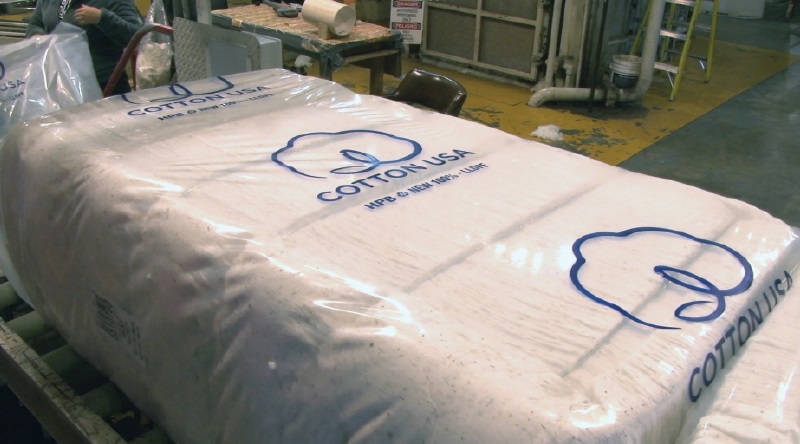Plexus: Futures Market Continues Freefall
New York futures collapsed further last week, as December fell another 906 points to close at 104.46 cents.
The market’s freefall accelerated last week, after the important 113 cents support level in December was breached last Monday. There are still too many unwanted long positions chasing after a limited number of buyers and as long as this situation continues, the market won’t have any sustainable support.
There was a glimmer of hope that buyers might finally be back after some non-US business was concluded to China on Wednesday, but we suspect that it was mainly of opportunistic nature, with a few local traders taking advantage of attractive (compared to domestic prices) high grade offers for nearby shipment in order to fill in some gaps.
Today’s U.S export sales report showed an all too familiar picture, as new sales were once again more than offset by cancellations. In the last 16 reports since March 24, there has only been one week that showed a net increase in sales.
Fortunately, the situation looks a lot better for the 2011/12 marketing year, which begins in a little more than two weeks from now. If we look at sales of both the 2010/11 and the 2011/12 crop years combined, U.S. commitments have still grown by 828,000 running bales since this string of cancellations began at the end of March.
If we look at the total amount of outstanding export commitments for both marketing years, we currently have 7.7 million statistical bales of Upland and Pima cotton on the books, which compares to 5.85 million statistical bales a year ago. Considering that the US crop is probably going to be around 2.0 – 2.5 million bales smaller, the statistical situation in the U.S. looks quite a bit tighter than a year ago.
However, this may not matter much to the market, because according to the latest USDA report, total foreign production is expected to increase by 10.7 million bales year-on-year, from 96.45 million bales to a record 107.16 million bales. If we add to this number the 7.7 million bales that the rest of the world has already purchased from the U.S., it adds up to more than enough supplies to cover foreign mill use, which the USDA currently pegs at 112.95 million bales. Therefore, the fact that the U.S. struggles with its crop may not be a major factor, at least not until later in the season.
While the pendulum in the cotton market is swinging from exuberance to extreme pessimism, we need to keep a watchful eye on macroeconomic events and outside markets. Although a bearish case for cotton can certainly be made based on the improving balance sheet, we need to remember that the cotton market does not exist in a vacuum. On July 15, the Fed Chairman started to prepare the financial world for yet another infusion of liquidity in order to keep the credit bubble from imploding. The next day, Mr. Bernanke tempered his statement by saying that the Fed may not take any immediate action to stimulate the economy. The sobering reality is that the Fed no longer has control over the economy and that it can merely try to manage expectations at this point.
Despite throwing trillions of dollars at the problem with an alphabet soup full of programs like TALF, TARP, QE1, QE2, “Cash for Clunkers,” or underwriting the debt of Government Sponsored Entities like Fannie May and Freddie Mac, the economy is barely showing any signs of life. This means that economic activity is much too anemic to service the rapidly expanding debt load, with total gross government debt alone surpassing 100 percent of GDP this year.
Once the “economic growth” option has to be ruled out as a potential way to reign in this escalating debt, there are really only two other alternatives left. One is to default on at least part of the obligations by forcing bondholders to take a ‘haircut’, which would have to be followed by tough austerity measures and an economic revival. The other, more convenient option for politicians and central bankers is to simply kick the can further down the road by ‘papering’ the debt problem over with even more debt.
The U.S., Europe and Japan have all chosen this path of least resistance and are trying to inflate the debt problem away and there is every reason to believe that they will continue to do so. The consequence of this money printing is that currencies are going to lose their purchasing power or conversely that the things denominated in these currencies will rise in nominal value, since an increasing amount of liquidity is chasing a finite amount of goods. It is no coincidence that gold as well as the Swiss Franc traded to new all-time highs against the U.S. dollar this week. It was quite interesting to compare the headline of a U.S. paper with that of a Swiss financial publication earlier this week, whereas the U.S. paper proclaimed “U.S. dollar rallies against Euro”, while the Swiss headline stated “Euro and U.S. dollar crashing.” It’s all about relativity!
We need to consider this relativity when we look at the value of commodities. While cotton may still seem expensive in U.S. dollar terms, it looks actually more affordable when measured in gold, Swiss Francs or some of the stronger Asian currencies. It is also getting relatively cheap compared to competing crops like corn and soybeans. December corn closed today at $6.81 per bushel and November soybeans were worth $13.84 per bushel, which makes cotton look undervalued.
So where do we go from here? At the moment none of the above rationale matters much, because there are still too many longs trying to dump their inventory while mills remain in hiding. As a result we will probably see the market overshoot to the downside and after breaching major support last week, it is anybody’s guess where this falling knife will finally stick. Once it does, we may see a V-shaped recovery, as some of the factors we outlined above should come back into play.








